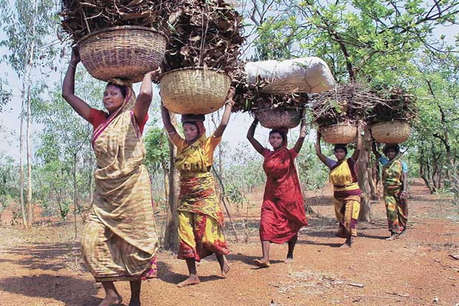Big brother is watching you
BRP Bhaskar
Sixteen months after the Supreme Court declared privacy a fundamental right and the Constitutional core of human rights, the Indian government has virtually nullified it through an executive order authorising 10 agencies under its control to intercept, monitor and decrypt any information generated, transmitted, received or stored in any computer.
The agencies authorised to tap electronic communications are those concerned with domestic and external intelligence gathering and investigation of crimes, tax evasion, smuggling, narcotics trade, foreign currency transactions etc.
The order exposes more than 500 million Indians who use computers and smart phones to snooping by officials.
The Opposition parties came down on the government, accusing it of imposing an undeclared Emergency. Congress President Rahul Gandhi, in a tweet told Prime Minister Narendra Modi: “Converting India into a police state isn’t going to solve your problems, Modi Ji. It is only going to prove to over 1 billion Indians what an insecure dictator you really are.”
Bharatiya Janata Party President Amit Shah responded with a reminder about the 1975-77 Emergency regime of his grandmother Indira Gandhi.
In an attempt to deflect criticism, Finance Minister Arun Jaitley pointed out that the government had issued the order under rules framed by the Congress-led United Progressive Alliance government.
In fact the order has been issued under the power conferred on the Centre by the Information Technology Act of 2000, read with the IT Rules of 2009. The Act was brought in by the first BJP-led National Democratic Alliance government, headed by Atal Behari Vajpayee.
The rules under the Act were framed by the second UPA government, headed by Manmohan Singh, to lay down “procedure and safeguards for interception, monitoring and decryption”. A law which confers on the government the power to intercept telegraphic and telephonic communications has been in force in the country since the colonial days.
Central and State governments have been using this law to eavesdrop on telephone conversations of political opponents. From time to time, others including media persons have been under the radar.
Two websites specialising in investigative journalism reported in 2013 that three Gujarat police agencies had tapped the telephone of a Bangalore woman four years earlier reportedly under instructions from Amit Shah, who was then Home Minister of the State.
The woman’s father, who was living in Gujarat, in a statement explained that he had requested Modi, who was then Chief Minister, to“look after” her.
When the electronic age dawned, the Central government devoted attention to devising ways of regulating communication using the new technology. The result was the IT Act which conferred wide powers on the police.
In 2015 the Supreme Court struck down Section 66A of the Act which placed restrictions on online speech on the ground that it violated the Constitutional provision guaranteeing freedom of speech. However, there have been reports that the police continues to slap cases against social media users under that section.
In a reply to queries under the Right to Information Act, the UPA 2 regime revealed in August 2013 that “on an average between 7,500 t0 9,000 orders for interception of telephones and 300 to 500 orders for interception of emails are issued by the Central government per month”.
Nine of the 10 agencies the Modi administration has authorised to snoop enjoyed the power under the UPA government too. The new entrant is the Commissioner of Police, Delhi. Although Delhi has a State government, the Delhi police is not under it. The Centre controls it through the Lieutenant Governor of Delhi.
The 2008 Mumbai terror attack impressed upon the Indian government the need to secure Internet space and keep track of information flowing through it. Accordingly, it asked the Centre for Development of Telematics (C-DoT) to develop a suitable mechanism for the purpose.
C-DoT proposed the setting up of a centralised monitoring system, based on the US National Investigation Agency’s surveillance programme code-named PRISM. A provision incorporated in the licensing agreements of telecom operators made it obligatory for them to provide to law enforcement agencies any data they sought.
A pilot project was launched in Delhi. It was subsequently enlarged and extended countrywide
Today, there are two Central monitoring stations, one in Delhi and the other in Bangalore and a score of regional monitoring centres scattered across the country which can seek data from the service providers. --Gulf Today, Sharjah, December 25, 2018.
